What Are Those Chinese Beef on a Stick Called
Chinese food is a big deal in my family. We have a local spot, and my Dad knows the owner and His Chinese food is the best in the area. Unfortunately prices have continued to go up, and we can't go there as often. In a similar vein to my Chinese chicken on a stick recipe, I wanted to create some of my favorite foods from there, at home - another one of those is beef on a stick. Just want the recipe? Click here to jump to it! For beef on a stick, I've found that flank steak works best; However, I also have no qualms with using skirt steak - whatever option is cheapest on a per pound basis is best. In general, skirt steak will have more fat than flank steak. This is beneficial depending on how well done you like your meat. Both flank and skirt steak are fibrous and should be cooked at high heat to rare/medium-rare to remain tender. The biggest complaint you'll find with people who use flank and/or skirt steak is that it's dry - in almost all cases, they've overcooked their meat. All beef in the United States is required to be inspected for wholesomeness (paid for by Tax dollars). However, grading for quality is voluntary - it is requested and paid for by the meat producer/processor. Beef that is graded receives one of three grading shields: Prime, Choice, or Select. The main thing being analyzed is the amount of marbling in the meat (fat that's inter-dispersed in the lean meat) and the maturity (age). Other factors like color and texture are also taken into consideration. Something that not a lot of people understand though is that "Grading" applies to more than a single sub-primal cut and applies to the whole animal or split body of the cow. Meaning, a choice-graded Ribeye steak will also have a flank steak, which is also choice-grade. However, the Ribeye is a more desirable cut of meat due to increased level of intramuscular fat/marbling. For instance, a restaurant that purchases various cuts of meat from a producer may only want 30% of the cow; Meaning, the rest of the cuts are sold at retail to grocery stores. My point in stating the above is that you can get a great cut and quantity of meat for a relatively low cost. To prepare the beef on a stick, you will need: Flank steak is typically vacuum sealed in something like cryovac. With your knife, open the package by cutting the package towards the top to allow air in. Remove the beef and place on your cutting-board. Do not wash or rinse your beef in the sink. Doing so will only increase your risk of food poisoning. Washing raw beef in the sink can contaminate work surfaces, the sink, cooking utensils, clothing, and kitchen equipment. Rather, pat dry the outside of the beef with paper towels and discard of the vacuum packing, the purge (the meat juice), and paper towels. The overarching goal with the flank steak is to cut it into strips. The strips need to be relatively uniform as they should cook and finish at the same time on the grill. It also makes putting them on the skewer easier. Apart from cutting in uniform strips, you should also be cutting against the grain. The main reason is that it improves the eating experience as the meat will be easier to chew - it will be more tender. While you may be tempted to remove the fat, it won't matter much. If you're using flank steak, it's already a fairly lean cut of meat. If you're using skirt steak, removing a nodule or two won't matter much either; Remember, fat is flavor. While I know people like to make substitutions in marinades, the only two ingredients I wouldn't skimp on are the Gochujang and the ginger as they are the primary taste contributors. This marinade was for ~2.5 lbs of Flank steak. This amount of marinade also fits well inside a 1 gallon storage bag too. For the marinade you will need: In terms of equipment, you will need: In your large mixing bowl, combine the ingredients in the specified quantities above and mix thoroughly - ensuring that the ingredients have been fully incorporated. In order to marinate the beef, all you need are two, 1-gallon storage bags. Place the beef strips inside one of the bags and then place the beef-laden bag inside the other bag. Two bags are used in order to prevent leaks in the refrigerator and act as a second barrier. Pour the marinade into the first bag. Before sealing the bag, attempt to remove as much oxygen as you can and then seal the bag. Do the same for the second bag. Then, massage the marinade into the beef. You should marinate the beef for at least 12 hours. However, you can go as long as 2 days; Going longer could cause the meat to deteriorate. Flank and skirt steak will take very well to marinades and typically 12-24 hours is sufficient. The USDA website notes: "Most recipes for marinating meat and poultry recommend six hours up to 24 hours. It is safe to keep the food in the marinade longer, but after two days it is possible that the marinade can start to break down the fibers of the meat, causing it to become mushy." The next step will depend on the type of grill you have and the material the skewers are made of. If you have a charcoal grill and the skewers are made of wood, it's recommended to soak the skewers overnight; This is because the wood is in direct contact with the heat source and may combust. While the beef marinates, allow the skewers to sit in water overnight. However, if you own a gas or pellet grill, you don't need to soak the skewers as it's easier to manipulate hot zones. After you've waited 12-48 hours, you can drain the excess marinade in the trash - you can't save or reuse the marinade as it's been contaminated with raw meat. Again, do not drain the marinade in the sink - doing so will only contaminate it. In order to put the beef on the stick, you will need: After draining most of the marinade, place the beef strips on the tray or plate. From here you will put the beef on a stick. When putting the beef on the stick, I've found that a cross-hatch pattern tends to keep them on better than sliding up the beef. You can fit one beef strip on each skewer. For beef on a stick, I use my Pellet grill on PID mode at 450F. On my pellet grill, the hot zones are at the front and at the back. Meaning, you should place the beef sticks away from these zones and toward the center. Flank steak doesn't need long on the grill - You should be cooking on high heat for roughly 15-20 minutes. Any longer will end up drying out the meat. The same could be said for skirt steak. Again this is one of the advantages of using skirt steak is that the added fat content will help prevent the meat from drying out - Meaning if you have eaters who like meat well-done, skirt steak is more forgiving. Once they've been on the grill for 15 minutes, pull them off the grill and enjoy! Beef on a stick is one of my favorite things from Chinese take-away. This recipe tastes as good, if not better than most local spots in my area. I'm not too big on sauces with beef on a stick, usually it's more than enough on it's own. However, a great sauce I like for Beef on a stick is Bachan's Hot and Spicy Japanese Barbecue sauce. Grill Large mixing bowl One-gallon storage bags Measuring cups Tablespoon Wooden skewers Large plate or serving tray Grater Sharp knife Remove flank steak from packaging. Discard packing in trash and pat dry the flank steak. Use a sharp knife to cut the flank steak against the grain into strips. Combine in a large mixing bowl: ¼ cup soy sauce, ¼ cup rice vinegar, 3 tablespoons gochujang, 2 tablespoons of sesame oil, 2 tablespoons of freshly grated ginger, and 6 stems of scallions (with whites roots/whites removed); Mix until fully incorporated. Put the beef strips into a one-gallon storage bag. Put the beef-laden bag into another one-gallon storage bag. Pour the marinade into the storage bag with the beef. Push air out of the the marinade bag and seal. Do the same for the second bag. Work the marinade into the beef by massaging it. Marinate the beef for 12- 24 hours. Throughout the day, flip the bag over so that all parts of the beef are fully marinated. Once marinated, carefully dump excess marinade into the trash and put the beef strips on a serving tray. The marinade bag can be discarded as it is now contaminated with raw beef. Using your wooden skewers, follow a cross-hatch pattern to keep the beef on the stick. On my pellet grill I set the temperature to 450F or "High Heat" on PID mode. Position the beef-skewers away from the hot zones; Grill for 10 minutes. After 10 minutes, flip the skewers over. In order to achieve a char, I place each skewer on the hot zones for 1-2 minutes on each site. If you're using a charcoal grill, it's recommended to soak the wooden skewers at the same time the beef marinates to prevent them from combusting. If you're using a pellet or gas grill, you do not need to soak the skewers. What Type of Beef to Use?

USDA Grading?

How to Prepare Beef on a Stick
Slicing the Steak for Beef on a Stick
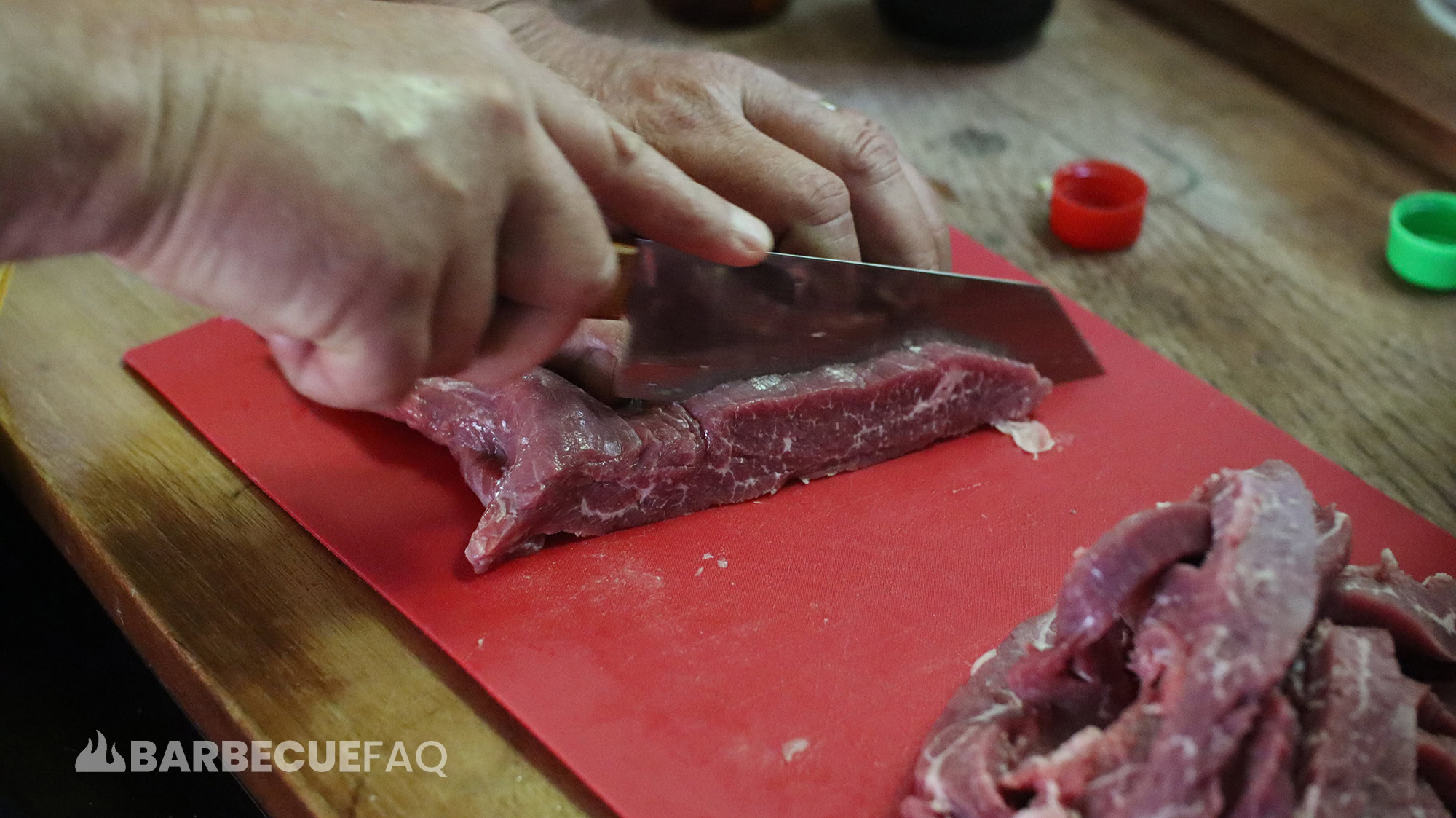
Preparing the Marinade
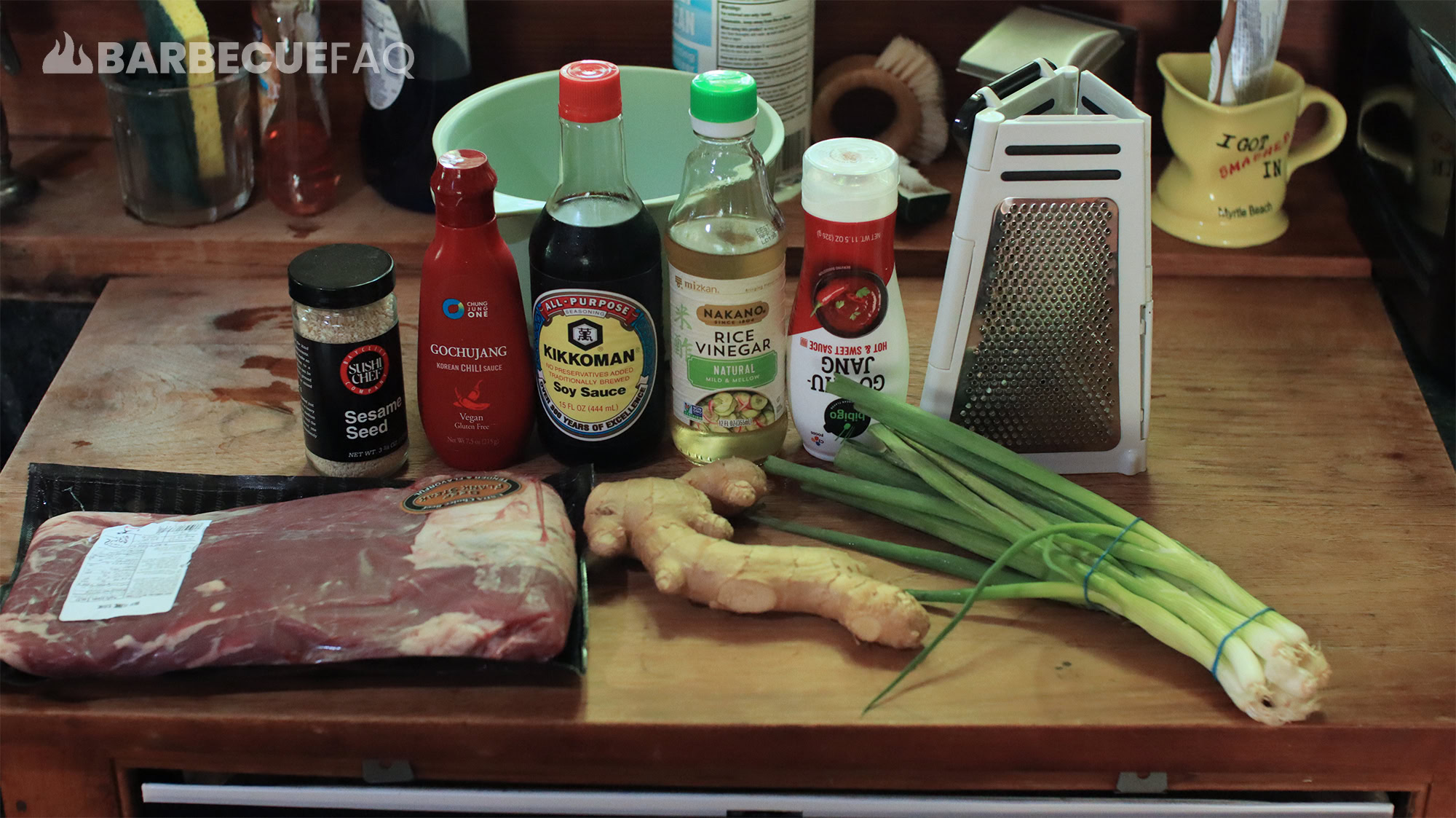
Marinating the Beef
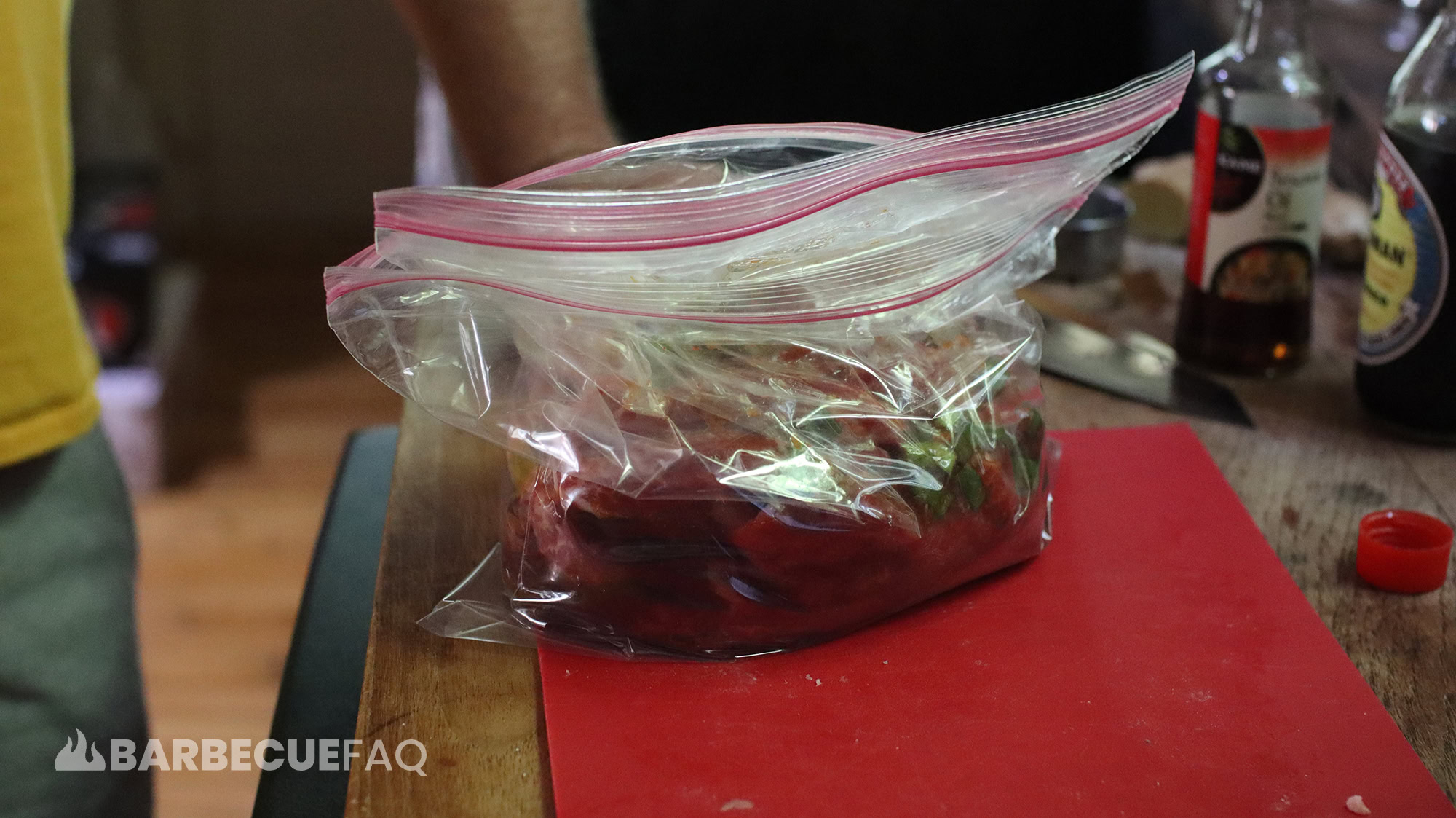
Putting the Beef on a Stick (Skewer)
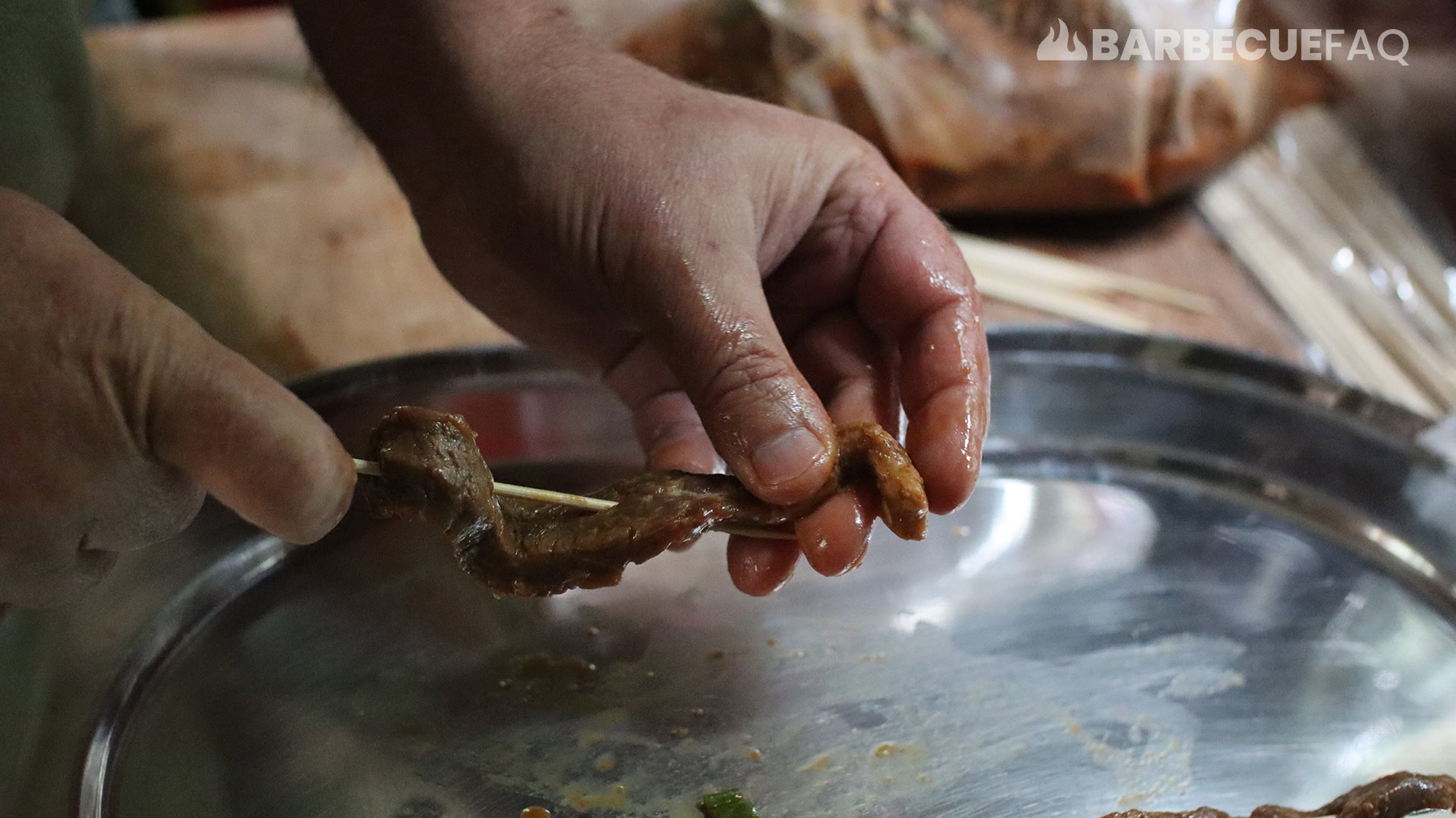
Grilling the Beef on a Stick
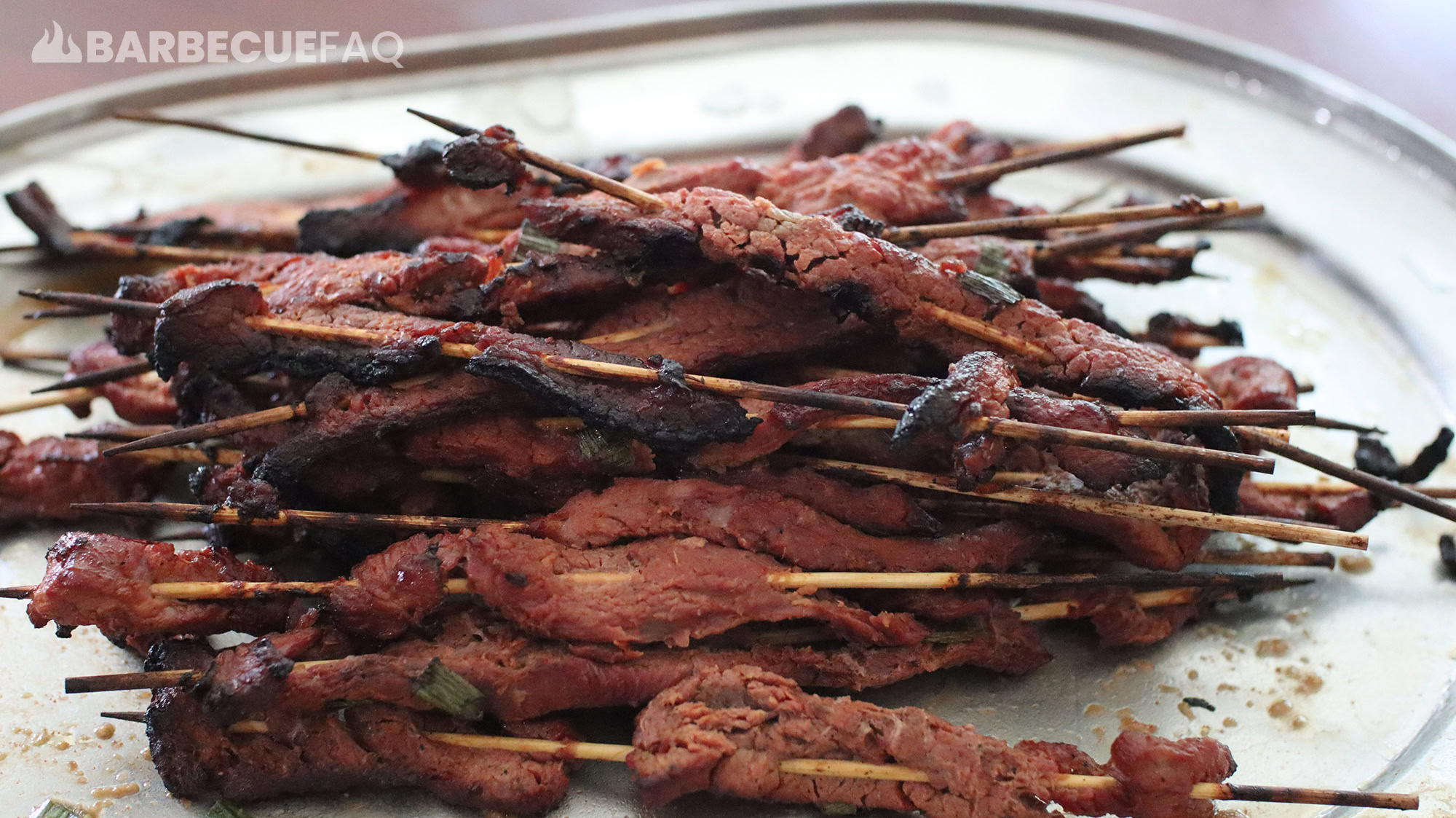
Final Thoughts

Marinade
Create the Marinade
Marinate the Beef
Putting the Beef on the Stick
Grilling the Beef on a Stick
johnsoncoughts1965.blogspot.com
Source: https://barbecuefaq.com/beef-on-a-stick-recipe/
0 Response to "What Are Those Chinese Beef on a Stick Called"
Post a Comment